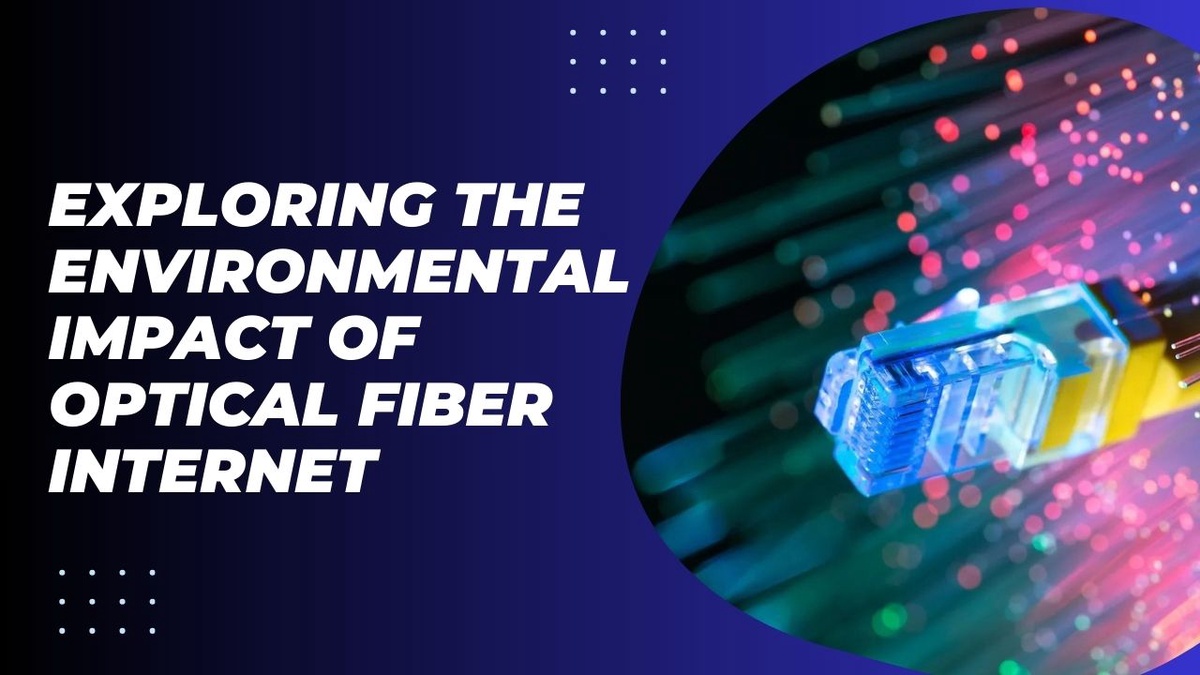Fiber optics have revolutionized communication and data transmission, offering numerous benefits over traditional copper wires or coaxial cables. However, alongside these advantages come challenges that impact both the environment and the economy. Explore and select the most appropriate internet plans with one of the premier internet providers i.e., Top Internet Plans. In this article, we'll explore the benefits and challenges of optical fiber internet, along with potential solutions, opportunities, and emerging trends in the field.
Can I Get Fiber Internet?
Yes, you can likely get high-speed internet fiber depending on your location and service providers in your area. Fiber optic internet offers incredibly fast and reliable connections, ideal for streaming, gaming, video conferencing, and more. Contact local internet service providers to inquire about availability, packages, and installation options. Fiber internet delivers high-speed connectivity by transmitting data using light pulses through thin glass fibers, ensuring minimal latency and superior performance compared to traditional broadband technologies like DSL or cable. Enjoy the benefits of ultra-fast internet speeds with fiber optic technology, enhancing your online experience for both work and leisure activities.
Benefits of Fiber Optics
Fiber optics offer several advantages.
- Efficiency and Cost-effectiveness - ATT Fiber plans can carry more data with less power and interference compared to traditional cables, resulting in cost savings and improved efficiency.
- Security and Reliability - Immune to electromagnetic interference and hacking, fiber optics ensure secure and reliable data transmission, vital in sectors like telecommunications, healthcare, and defense.
- Flexibility and Scalability - Easily installed, upgraded, and adapted to various needs and locations, fiber optics offer flexibility and scalability crucial for evolving technological demands.
Challenges of Fiber Optics
Despite their advantages, fiber optics pose challenges.
- Environmental Impact - The production, installation, and disposal of fiber optics demand significant energy and materials, generating waste and emissions. Installation can also lead to environmental damage such as habitat loss and water pollution.
- Electronic Waste - Fiber optics contribute to electronic waste when discarded or replaced, as they are not easily recyclable or biodegradable.
Solutions for Fiber Optics
To address these challenges, stakeholders can implement various solutions.
- Improved Design and Performance - Enhancing fiber optic design to reduce material use, increase durability, and lower power consumption can mitigate environmental impact.
- Sustainable Practices - Adopting sustainable practices like using renewable energy sources, minimizing waste, adhering to environmental standards, and promoting recycling can reduce the environmental footprint of fiber optics.
- Awareness and Education - Increasing public and professional awareness about the environmental and economic impacts of fiber optics can encourage more efficient and ethical use.
Opportunities for Fiber Optics
Implementing solutions presents opportunities for both the environment and the economy.
- Supporting Transition to Low-carbon Economy - Xfinity fiber internet can aid the transition to a low-carbon economy by enabling renewable energy generation, smart grid management, and energy conservation.
- Social and Economic Development - By providing access to information, communication, education, healthcare, and entertainment services, fiber optics can enhance social and economic development, particularly in underserved or remote regions.
Trends for Fiber Optics
Several trends are driving the growth of fiber optics.
- Expansion of 5G Networks - The expansion of 5G networks requires robust fiber optic infrastructure to support high-speed data transmission and connectivity.
- Internet of Things (IoT) - The emergence of IoT devices increases the demand for reliable and high-speed data transmission, driving the need for fiber optic networks.
- Cloud Computing and Artificial Intelligence - The adoption of cloud computing and AI applications rely on fast and secure data transmission, further driving the demand for fiber optics.
- Increased Online Activities - The rise of online activities and streaming services necessitates higher bandwidth and reliable data transmission, driving the growth of high-speed internet fiber.
Conclusion
Xfinity fiber internet offers numerous benefits in terms of efficiency, security, and scalability. However, they also present challenges such as environmental impact and electronic waste generation. By implementing solutions like improved design, sustainable practices, and increased awareness, stakeholders can maximize the opportunities fiber optics offer while mitigating their negative impacts. As trends like 5G expansion and IoT continue to drive the demand for fiber optics, stakeholders must balance technological advancement with environmental and economic considerations for a sustainable and prosperous future. To know more about internet plans, call Top Internet Plans customer service number - +1(855)-217-9882.


No comments yet